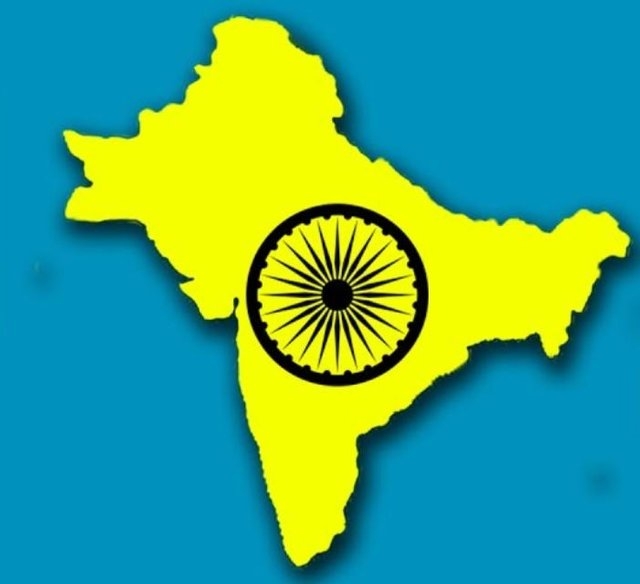PoK not alone but entire Pakistan on Indian territory?
The studies and research on this behalf could be stretched further, but it is important to note that present Pakistan, imperially or culturally had no relations or legacy of ancient civilization-connect in any way.
Total Views |
Pakistan as a State was created under the provisions of a statutory clause under the India Independence Act 1947, introduced in the House of Commons in the UK on 18-7-1947. Pakistan as a country or even as a nation never existed in the past history.

It must be noted at the outset that in the initial remarks of the said Act, read as “an Act to make for the setting up in India of two independent Dominions…..” (Readers of this delicate and unjustifiable incidence in the pages of history should ponder over the following legislative gimmick:
I quote:
“BE it enacted by the King's most Excellent Majesty, by and with the advice and consent of the Lords Spiritual and Temporal, and Commons, in this present Parliament assembled, and by the authority of the same, as follows:
(1) (i) As from the fifteenth day of August, nineteen hundred The new and forty-seven, two independent Dominions shall be set up in Dominion of India, to be known respectively as India and Pakistan.
(2) The said Dominions are hereafter in this Act referred to as the “new Dominions", and the said fifteenth day of August is hereafter in this Act referred to as "the appointed day".
2.-(1) Subject to the provisions of subsection (3) and (4) Territories of this section, the territories of India shall be the territories under the new the sovereignty of His Majesty which, immediately before the Dominions appointed day, were included in British India except the territories which, under subsection (2) of this section, are to be the territories of Pakistan.
(2) Subject to the provisions of subsections (3) and (4) of this section, the territories of Pakistan shall be- (a) the territories which, on the appointed day, are included in the Provinces of East Bengal and West Punjab, as constituted under the two following sections ; A2 1 CH. 30. Indian Independence io & it GEO. 6. Act, 1947.
(b) the territories which, at the date of the passing of this Act, are included in the Province of Sind and the Chief Commissioner's Province of British Baluchistan; and
(c) if, whether before or after the passing of this Act but before the appointed day, the Governor-General declares that the majority of the valid votes cast in the referendum which, at the date of the passing of this Act, is being or has recently been held in that behalf under his authority in the North West Frontier Province are in favor of representatives of that Province taking part in the Constituent Assembly of Pakistan, the territories which, at the date of the passing of this Act,
(4) In this section, the expression " award " means, in relation to a boundary commission, the decisions of the chairman of that commission contained in his report to the Governor General at the conclusion of the commission's proceedings.
4.-(1) As from the appointed day- The Punjab. (a) The Province of Punjab, as constituted under the Government of India Act, 1935, shall cease to exist ; and (b) there shall be constituted two new Provinces, to be known respectively as West Punjab and East Punjab.
(2) The boundaries of the said new Provinces shall be such as may be determined, whether before or after the appointed day, by the award of a boundary commission appointed or to be appointed by the Governor-General in that behalf, but until the boundaries are so determined- (a) the Districts specified in the Second Schedule to this Act shall be treated as the territories to be comprised in the new Province of West Punjab ; and (b) the remainder of the territories comprised at the date of the passing of this Act in the Province of the Punjab shall be treated as the territories which are to be comprised in the new Province of East Punjab.
(3) In this section, the expression "award," means, in relation to a boundary commission, the decisions of the chairman of that commission contained in his report to the Governor-General at the conclusion of the commission's proceedings.”
(Source : Text of the India Independence Act 1947 : 10 & II Geo,6, Ch. 30 )
One has to remember most importantly that the said Act has set up two independent Dominions in India to be known as India and Pakistan. The dictionary meaning conveys that the House of Commons have given birth to one more, new State called Pakistan. The pressure of the public mood of the Indian people was the unavoidable and invisible force which drove the Imperial House of Commons in London to resort to such self-proclaimed supremacy over the captured land in different periods, at different places in different parts of the world including India. In fact it would not be out of context to submit that the nationalist forces fighting for their national political independence respectively in different countries all over the globe including India forced the House of Commons to commence the disintegration process of the Colonial rule.
The British Government on the back foot, self-proclaimed guardian and custodian of the modern political human values which they insisted on sowing in their newly created independent States. The Britons were cunning and farsighted politicians. They left the Middle East leaving behind an international complicated problem in the form of Palestine. They left India leaving behind them a torturous enigmatic problem of Kashmir and kept both their creations busy fighting with each other for several decades. The Britons used the instrument of law and divided the country, on the one hand, they divided the Provinces of Assam and Bengal and erased the map of Punjab, and created two Punjabs—one, West Punjab and second East Punjab. They did the same gimmick in the case of East Bengal and West Bengal. The British justification in doing this international mischief was that the entire sub-continent was in turmoil and the resultant bloodbath on an unprecedented scale was uncontrollable, therefore in order to buy socio-political peace in the region, they had to resort to the measures that were taken. The Britons thought that in the given circumstances, they took the right and timely decisions only to avoid further human destruction.
Groups and there are several, which belief in the glory and its splendor in the ancient past of India that is “Bharat”, do not approve till this date, the division of India under coercion and duress and especially the artificial limb of the Indian nation what the Britons named as Pakistan, earnestly argue and advocate the correction of the recent mischievously made this gimmick.
The questions raised are whether the present mapped ‘Pakistan’ was in existence in the last century at all? The young ones in present Pakistan often must be asking their elders who were their ancestors were? The elders perhaps have no explanation to satisfy the kids. It is obvious that Pakistan has no ancient culture or any sort of glorious past history. The very title ‘Pakistan’ itself has come into existence on 14th August 1947 when the Indian territory i.e. Bharat Bhoomi was sabotaged at the political level and several thousand tribals, Muslims, and several other nomadic tribes still lived in primitive period were awarded the piece of land which later on was made known as ‘Pakistan’.
History notes that in 1948 the kingdom of Jammu and Kashmir was invaded by the tribal bandits and plunderers. These tribals stayed far away from the modern civilization. The history of Pakistan for the period preceding the country's independence in 1947 is shared with that of Afghanistan, India, and Iran. Spanning the western expanse of the Indian subcontinent and the eastern borderlands of the Iranian plateau, the region of present-day Pakistan served both as the fertile ground of a major civilization and as the gateway of South Asia to Central Asia and the Near East.
Situated on the first coastal migration route of Homo sapiens out of Africa, the region was inhabited early by modern humans. The 9,000-year history of village life in South Asia traces back to the Neolithic (7000–4300 BCE) site of Mehrgarh in Pakistan, and the 5,000-year history of urban life in South Asia to the various sites of the Indus Valley Civilization, including Mohenjo Daro and Harappa.
The pre-historic periods: There are two pre-historic periods: (1) Paleolithic period and, (2 ) Indus Valley Civilization
Excavated ruins of the Great Bath at Mohenjo-daro in Sindh:
The Bronze Age in the Indus Valley began around 3300 BCE with the Indus Valley Civilization. Along with Ancient Egypt and Mesopotamia, it was one of three early civilizations of the Old World, and of the three the most widespread, covering an area of 1.25 million km. It flourished in the basins of the Indus River, in what is today the Pakistani provinces of Sindh, Punjab and Balochistan, and along a system of perennial, mostly monsoon-fed, rivers that once coursed in the vicinity of the seasonal Ghaggar-Hakra River in parts of north-west India. At its peak, the civilization hosted a population of approximately 5 million spread across hundreds of settlements extending as far as the Arabian Sea to present-day southern and eastern Afghanistan, and the Himalayas. Inhabitants of the ancient Indus river valley, the Harappans, developed new techniques in metallurgy and handicraft (corneal products, seal carving), and produced copper, bronze, lead, and tin.
The studies and research on this behalf could be stretched further, but it is important to note that present Pakistan, imperially or culturally had no relations or legacy of ancient civilization-connect in any way.
The major ethnic groups who had accompanied warriors invading from the far West as far as from Greeks and Roman empire of Pakistan include Punjabis, Pashtuns, Sindhis, Saraikis, Muhajirs, Baloch, Brahui Speaking Dravidians Paharis, Hindkowans, and other smaller groups. Smaller ethnic groups found throughout the nation include Gujjar, Khowar, Chitralis, Shina, Kalash, Siddi, Kashmiris, Burusho, Wakhis, Hazara and Baltis.
It can well be surmised that peoples who migrated and settled in the geographical area now known as Pakistan were from across the middle east and as far as from Greece and Egypt, who may have accompanied the invaders from these areas, either as soldiers or servants and slaves. These were not Mohamadens, but tribals from different parts of the world. The natives in this area were Hindus, Buddhists, or Jains. It is well known that the Maurya Dynasty from Pataliputra, present-day Patna, Bihar had their empire spread over up to present-day Bagdad, Iraq.
These statements support the theme that there was no presence of a State or a country called Pakistan in the earlier centuries.
Moreover, Pakistan could be described as a State which came into being as a result of a statutory provision in an Act titled as “India Independence Act, 1947” passed in a legislature of imperial power and it will be interesting to note that that legislature never knew the word Pakistan.
(I must make myself absolutely clear that in no way I am trying to undermine the supremacy of the nationalist vigor and the political efforts undertaken by the nationalist parties especially the Indian National Congress and several other politically-oriented groups for the independence of Bharat.)



